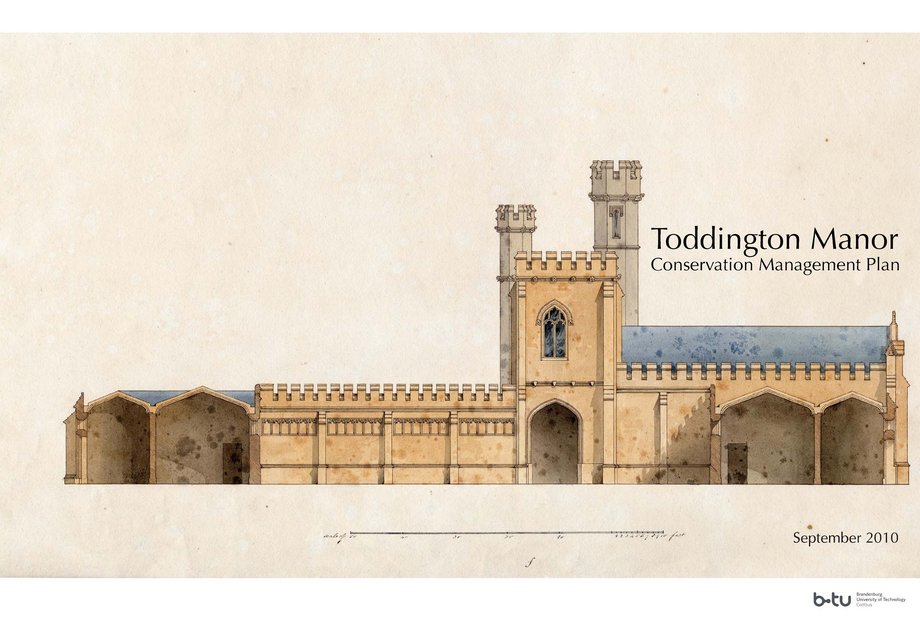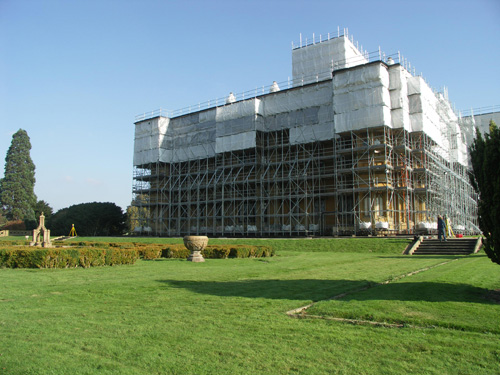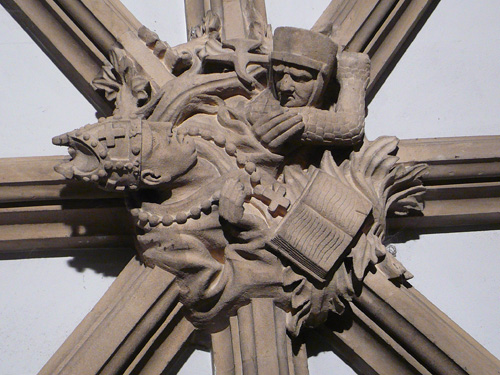Toddington Manor



Toddington Manor Conservation Management Plan
Prof. Dr. Leo Schmidt and Smriti Pant M.A.
Introduction
Built by an amateur architect, Charles Hanbury-Tracy, for himself from 1819-1840, Toddington Manor is a Gothic Revival country house located in the village of Toddington, Gloucestershire, in south-west England. Toddington Manor is a Grade I listed building standing amidst 19th-century formal gardens and a late 18th-century landscape park. The latter is registered as Grade II in the Register of Parks and Gardens of Special Historic Interest.
When the 4th Lord Sudeley - grandson of the builder of the present house and heir of the Tracy family who had lived at Toddington since the beginning of that Millennium - was bankrupted, most of the original contents of the house were sold. The Manor, however, was revived and refurbished for one generation by a new owner only to be emptied again in the 1930s. In 1936, the 4,472 acre estate was fragmented into dozens of lots. An area of 146 acres was all that remained with the house when it became the headquarters of the National Union of Teachers in 1939. The rest of the grounds passed into many different hands and - being used for different purposes, some of them unsympathetic - gradually lost much of its character as a designed landscape.
Having survived military use in WW II, Toddington housed a succession of schools, with a brief and unsuccessful interlude as a private residence. In the 1960s, it suffered a bad fire followed by a great deal of structural change in its upper floors. With the last institutional use folding in 1985, the Manor stood empty for two decades, quietly deteriorating, while various attempts at finding a new use came to nothing.
Under such circumstances, the purchase of Toddington Manor and its surrounding grounds by the British artist, Damien Hirst, in 2005 has renewed the chances of future survival of the place. Since then not only has further deterioration been put to stop, the compromised and partially lost integrity of the place - of the buildings as well as of the grounds that belong to them - has also been recovered to a great extent.
Research Project
An immediate stylistic precursor of the Palace of Westminster (Houses of Parliament), Toddington Manor is an outstanding example of the early Gothic Revival. Since autumn 2007, it has been the focus of a major research project conducted by a multi-disciplinary team of experts from BTU Cottbus. The main aims of this ongoing research project are to study Toddington Manor as a country house of pre-Victorian times as well as to identify and highlight its contribution to the development of the Gothic Revival movement in the early 19th-century. So far a comprehensive architectural survey of the building, conducted during the course of several research campaigns, has given a deeper insight into the initial building process and the subsequent changes made to the floor plans of the building. The planning and design development of the external facades and the interiors has also been carefully studied by comparing historic plans, sketches and other documents as well the current condition of the built fabric.
Conservation Management Plan
Damien Hirst intends to dedicate Toddington Manor as a place for Contemporary Art, combined with the function of a private residence - a change which allows a sympathetic and conservative repair of the significant historic fabric that has survived the damage and loss which Toddington suffered through the 20th century. This will provide a chance for the house to acquire a well-designed new layer in the devastated areas where historic fabric and appearance have been lost - both inside the buildings and in the grounds that surround them.
In order to ensure that the conservation and development issues arising from the respective needs of Toddington Manor and its current owner are addressed in keeping with statutory requirements and other national as well as international conservation guidelines, MRJ Rundell and Associates Ltd. (acting on behalf of Damien Hirst) also commissioned the Depatment of Architectural Conservation at BTU Cottbus to prepare a Conservation Management Plan for Toddington Manor. The final version of the CMP, written by Prof. Dr. Leo Schmidt and Smriti Pant M.A., was submitted to English Heritage as part of a listed building consent application by MRJ Rundell and Associates Ltd. in December 2010.
Team:
Department of Architectural Conservation
Prof. Dr. Leo Schmidt
Anne Bantelmann M.A.
Dipl.-Ing. Asita Farnusch
Smriti Pant M.A.
Department of Architectural History
Prof. Dr. Klaus Rheidt
Dr. Birte Rogacki-Thiemann
Dipl.-Ing. Haiko Türk
